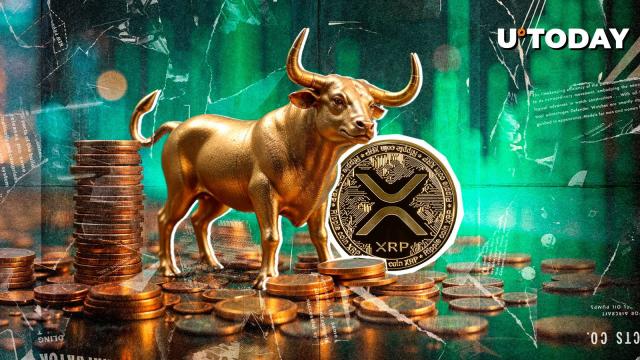I want to write down a question I have been thinking about for a long time: How might Bitcoin perform under a major transformation of capital flow, a situation that Bitcoin has never experienced since its inception.
I believe that once deleveraging ends, Bitcoin will usher in an incredible trading opportunity. In this article, I will elaborate on my thoughts in detail.
What Are the Historical Key Driving Factors of Bitcoin Price?
I will adopt Michael Howell's research on Bitcoin price historical driving factors and use these findings to further understand how these cross-factors might evolve in the near future.

As shown in the chart above, Bitcoin's driving factors include:
· Total demand for high-risk, high-beta assets by investors
· Correlation with gold
· Global liquidity
Since 2021, I have used a simple framework to understand risk appetite, gold performance, and global liquidity by focusing on the percentage of fiscal deficit to GDP as a convenient way to understand the fiscal stimulus that has dominated global markets since 2021.
A higher percentage of fiscal deficit to GDP mechanically leads to higher inflation, higher nominal GDP, and thus higher total corporate revenues, as revenue is a nominal indicator. For companies that can enjoy economies of scale, this is a boon to their profit growth.
In most cases, monetary policy plays a secondary role in risk asset activity, while fiscal stimulus has been the primary driver. As shown in the chart regularly updated by @BickerinBrattle, the monetary stimulus in the United States is so weak compared to fiscal stimulus that I will set it aside in this discussion.

As shown in the chart below, among major developed Western economies, the United States' fiscal deficit as a percentage of GDP is far higher than any other country.

Due to the US running such a large deficit, income growth has been dominant and led to the US stock market's outstanding performance compared to other modern economies:

Due to this dynamic, the US stock market has become the primary marginal driver of risk asset growth, wealth effect, and global liquidity, thus becoming the attraction for global capital: the United States. Due to the dynamic of capital inflow to the US, coupled with a massive trade deficit, the US obtains dollars from foreign countries by exchanging commodities, and these dollars are subsequently reinvested in dollar-denominated assets (such as Treasury bonds and MAG7), making the US the primary driver of global risk appetite.

Now, returning to Michael Howell's research. Risk appetite and global liquidity have been primarily driven by the US in the past decade, and this trend has accelerated since the COVID-19 pandemic due to the US running such a massive fiscal deficit compared to other countries.
Therefore, Bitcoin, although a global liquidity asset (not just from the US), has become increasingly positively correlated with the US stock market since 2021.

Now, I believe the correlation with the US stock market is a false correlation. When I use the term "false correlation" here, I am approaching it from a statistical perspective, believing that a third dependent variable not shown in the correlation analysis is the actual driving factor. I believe this factor is global liquidity, which has been dominated by the US over the past decade, as we discussed above.
As we delve into the discussion of statistical significance, we must also establish causality, not just positive correlation. Fortunately, Michael Howell has also done excellent work in this area, establishing causality between global liquidity and Bitcoin through the Granger causality test.

So, what benchmark starting point does this provide us?
Bitcoin is primarily driven by global liquidity, and due to the US being the main driver of increased global liquidity, a false correlation has emerged.
In the past month, some major narratives have surfaced as we speculate about Trump's trade policy goals and the reorganization of global capital and commodity flows. I view these as follows:
The Trump administration wants to reduce trade deficits with other countries, which mechanically means reducing dollars flowing to foreign countries that would not be reinvested in US assets. A reduction in trade deficits cannot occur without this happening.
The Trump administration believes foreign currencies are artificially suppressed, thus making the dollar artificially strong, and wishes to rebalance this. In short, a weaker dollar and stronger foreign currencies will lead to higher interest rates in other countries, thereby encouraging capital to flow back to capture these rates that perform better under foreign exchange adjustments, as well as domestic stocks.
Trump's "shoot first, ask questions later" approach in trade negotiations has led other countries to move away from the meager fiscal deficits compared to the US (as mentioned above) and invest in defense, infrastructure, and generally protectionist government investments to become more self-sufficient. Whether or not tariff negotiations are downgraded (such as with China), I believe this is a done deal, and countries will continue to pursue this goal.
Trump wants other countries to increase their defense spending as a percentage of GDP and contribute more to NATO, as the US has been bearing a large portion of these costs. This will also increase fiscal deficits.
I will temporarily set aside my personal views on these points and focus on the potential impacts if we advance to the logical endpoint of these narratives:
Capital will leave dollar-denominated assets and flow back to their home countries. This means the US stock market will underperform relative to the rest of the world, bond yields will rise, and the dollar will weaken.
These capitals will flow back to places where fiscal deficits are no longer constrained, and other modern economies will begin massive spending and money printing to fund these increased deficits.
As the US transitions from a global capital partner to a more protectionist role, those holding dollar assets will have to increase the risk premium for these once-perfect assets and mark them with a broader safety margin. As this process unfolds, it will lead to rising bond yields, and foreign central banks will seek to diversify their balance sheets away from just US Treasuries and towards other neutral commodities like gold. Similarly, foreign sovereign wealth funds and pension funds may also pursue such diversification.
The counterpoint to these views is that the US is the center of innovation and technology-driven growth, and no country will overturn this idea. Europe is too bureaucratic and socialist to pursue capitalism like the US. I sympathize with this view, which might mean this is not a multi-year trend but a medium-term trend, as the valuations of these tech companies will limit their upside for some time.
Returning to the title of this article, the first trade is selling off excess US dollar assets held globally, avoiding ongoing deleveraging. Because the world holds too many of these assets, this deleveraging could become chaotic when risk limits are touched by large fund managers and more speculative players with strict stop-loss strategies. When this happens, we will see days similar to margin calls, where all assets need to be sold to raise cash. Now, the trading strategy is to survive and maintain ample funds.
However, as deleveraging subsides, the next trade begins - shifting towards a more diversified portfolio: foreign stocks, foreign bonds, gold, commodities, and even Bitcoin.
On market rotation days and non-margin call days, we have already started to see this dynamic forming. The US Dollar Index (DXY) is falling, US stocks are performing worse than stocks in other regions, gold is surging, and Bitcoin has surprisingly held up well compared to traditional US tech stocks.
I believe that as this occurs, the marginal increase in global liquidity will shift to a dynamic completely opposite to what we are accustomed to. Other regions will take on the task of increasing global liquidity and risk appetite.
As I contemplate the risks of this diversification in the context of global trade wars, I am concerned about the tail risks of diving too deeply into other countries' risk assets, as there are some major landmines in potential bad tariff news. Therefore, this makes gold and Bitcoin choices for global portfolio diversification during this transition.
Gold has been rising absolutely and is now setting new historical highs daily, reflecting this institutional shift. However, despite Bitcoin's surprisingly resilient performance throughout this institutional transition, its beta correlation with risk appetite has so far limited its performance, failing to keep up with gold.
Therefore, as we move towards a rebalancing of global capital, I believe the trade after this is Bitcoin.
When I compare this framework with Howell's correlation research, I can see they come together:
US stocks cannot be influenced by global liquidity, only by liquidity measured by fiscal stimulus plus some capital inflows (but we just determined this aspect of flow may stop or even reverse). However, Bitcoin is a global asset that reflects this broader perspective of global liquidity.
As this narrative is established and risk allocators continue to rebalance, I believe risk appetite will be driven by regions other than the US.
Gold is performing very well, so for the Bitcoin portion related to gold, we can check that box here as well.
Given all this, I first see the potential for Bitcoin to decouple from US tech stocks in the financial markets. I know this idea often signals a local top for Bitcoin. What's different this time is that we see the potential for significant changes in capital flows that will make it enduring.
So, for a macro trader of risk appetite like myself, Bitcoin feels like the purest trade here. You can't impose tariffs on Bitcoin, it doesn't care which border it's on, it provides high beta for portfolios without the current tail risks associated with US tech, I don't need to have an opinion on whether the EU can sort out its affairs, and it provides pure exposure to global liquidity, not just US liquidity.
This market regime is precisely why Bitcoin was born. Once the dust of deleveraging settles, it will be the fastest horse, accelerating forward.
Welcome to join BlockBeats official community:
Telegram Subscription Group: https://t.me/theblockbeats
Telegram Discussion Group: https://t.me/BlockBeats_App
Twitter Official Account: https://twitter.com/BlockBeatsAsia







